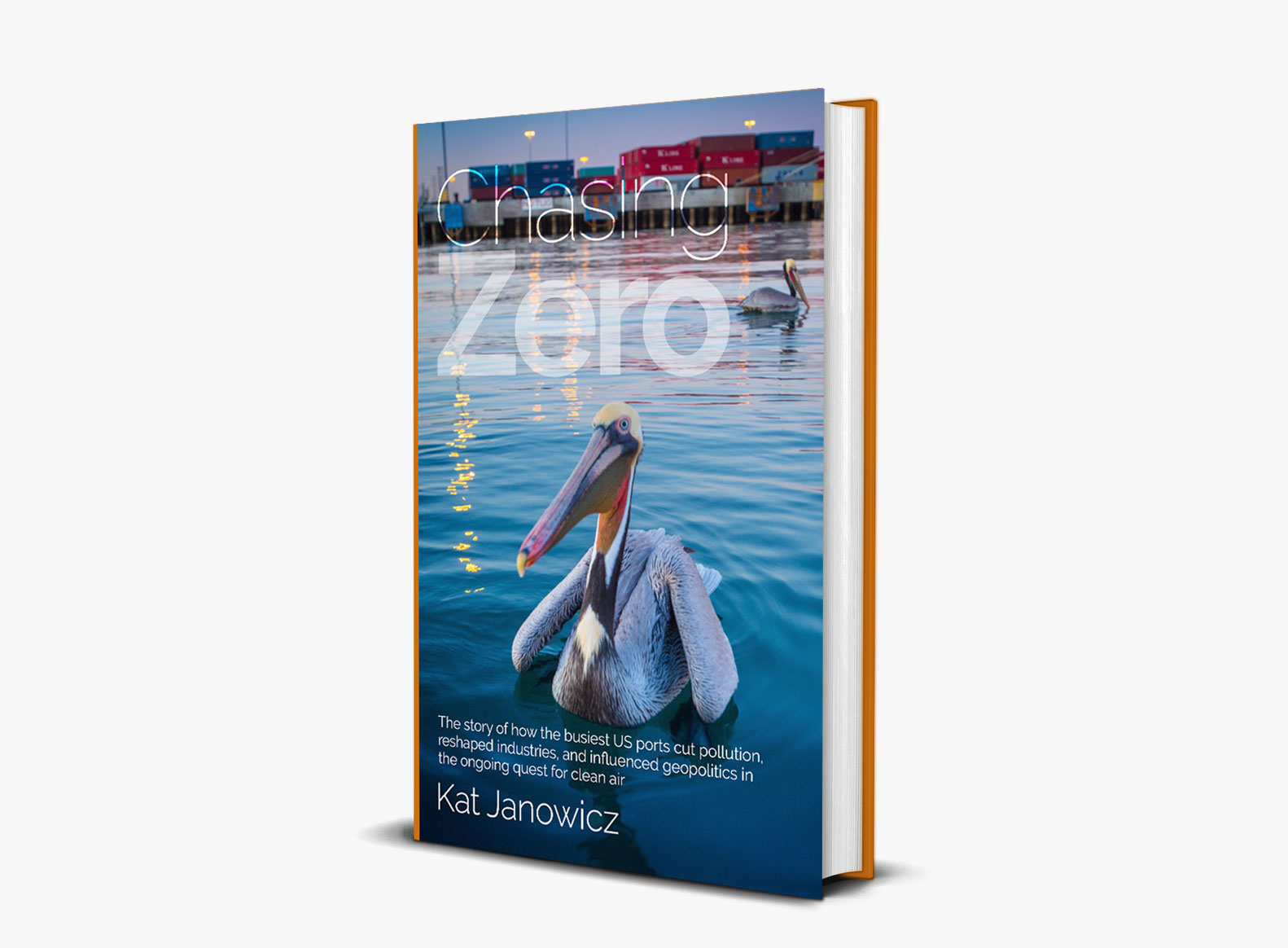Tell me and I forget. Teach me and I remember.Involve me and I learn.
—Benjamin Franklin
Tell me and I forget. Teach me and I remember.Involve me and I learn.
—Benjamin Franklin
Meet Kat
Kat Janowicz, author of Chasing Zero: The story of how the busiest US ports cut pollution, reshaped industries, and influenced geopolitics in the ongoing quest for clean air (published by Rare Bird), is a strategist advancing sustainability in transportation, energy & tech. She cares deeply about the health and welfare of all creatures, people and industry included.
“Never doubt that a small group of thoughtful, committed citizens can change the world; indeed, it’s the only thing that ever has.”
– Margaret Mead
THE QUEST FOR CLEAN AIR
Chasing Zero
Chasing Zero: The story of how the busiest US ports cut pollution, reshaped industries, and influenced geopolitics in the ongoing quest for clean air is a testament to human ingenuity and collaboration in addressing environmental challenges. This book pays tribute to the many people who have dedicated decades to tackling these complex issues, including those who are no longer with us. Their stories and contributions are honored within its pages, serving as a testament to their remarkable achievements in creating a sustainable, prosperous future.
The author, Kat Janowicz, is the president of 3COTECH Inc. and a leading environmental and business strategist in the fields of energy, transportation, technology, infrastructure, and international trade. Her book focuses on the “Think Globally, Act Locally” narrative and the remarkable transformation of the Ports of LA and Long Beach, as well as their impact on international trade. Kat traces the history of the ports’ environmental reformation, discusses the challenges of eliminating pollution from international trade, explores the promise and realities of technology, and highlights the roles local government, the private sector, communities, and residents have played in the process.

THE QUEST FOR CLEAN AIR
Chasing Zero
Chasing Zero examines the power of communities to reduce pollution, reshape industries and influence global politics.
Author Kat Janowicz, president of 3COTECH and a leading environmental and business strategist in energy, transportation, technology, infrastructure and international trade, focuses on the “Think Globally, Act Locally” story and remarkable transformation of Southern California’s busiest ports. She traces the history of the ports’ environmental reformation, the challenges of eliminating pollution from international trade, the promise and realities of technology, and the roles local government, the private sector, communities, and residents have played in the process.
Two Decades of Going Green
Explore the “Going Green Timeline” that marks the pivotal moments in the LA-Long Beach ports’ environmental reformation. The San Pedro Bay Ports Clean Air Action Plan charts over two decades of the quest for clean air and commitment to sustainable progress.
Zeroing in on Zero
MAKING INNOVATION WORK FOR EVERYONE
Evolving Technology
Computers, mobile phones and the internet are essential to everyday life. Technology also drives business. But not all solutions are fully developed or commercially available, especially when it comes to powering vehicles, equipment and vessels to deliver goods to market. Also, while new technology creates new jobs, increased efficiency often eliminates existing ones. How can technology work for everyone?
TRANSITIONING TO CLEAN ENERGY
Modernizing Infrastructure
Bridges, roadways, terminals and other critical infrastructure need to be built and maintained. Electric vehicles need to recharge, ships that run on liquefied natural gas need to refuel, as does equipment powered by hydrogen fuel cells. Nothing and no one moves without infrastructure. Building it requires money, materials and a trained, highly skilled workforce. How do we accelerate the capital projects to ensure capacity and clean energy?
PAYING FOR A SUSTAINABLE FUTURE
Funding Innovation
It is said an engineer with an unlimited budget can build anything. But budgets are limited and technology and infrastructure have hefty price tags. Support infrastructure alone can be just as costly as the technology it’s meant to service. In a highly competitive world whose inhabitants include some who still question the reality of climate change, what resources can we cobble together to pay for a sustainable future and how do we use those resources wisely?
PAYING FOR A SUSTAINABLE FUTURE
Funding Innovation
It is said an engineer with an unlimited budget can build anything. But budgets are limited and technology and infrastructure have hefty price tags. Support infrastructure alone can be just as costly as the technology it’s meant to service. In a highly competitive world whose inhabitants include some who still question the reality of climate change, what resources can we cobble together to pay for a sustainable future and how do we use those resources wisely?

